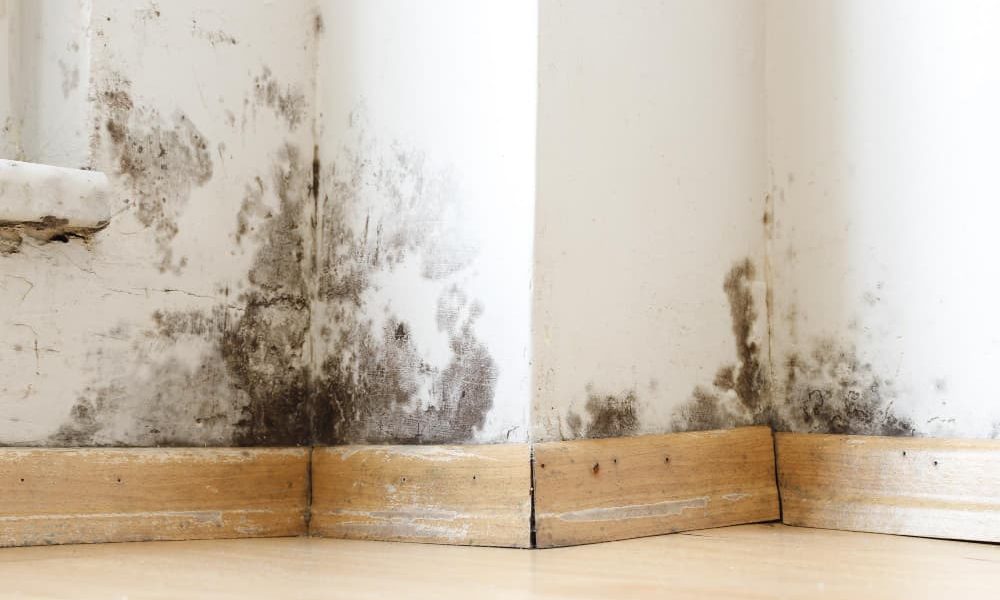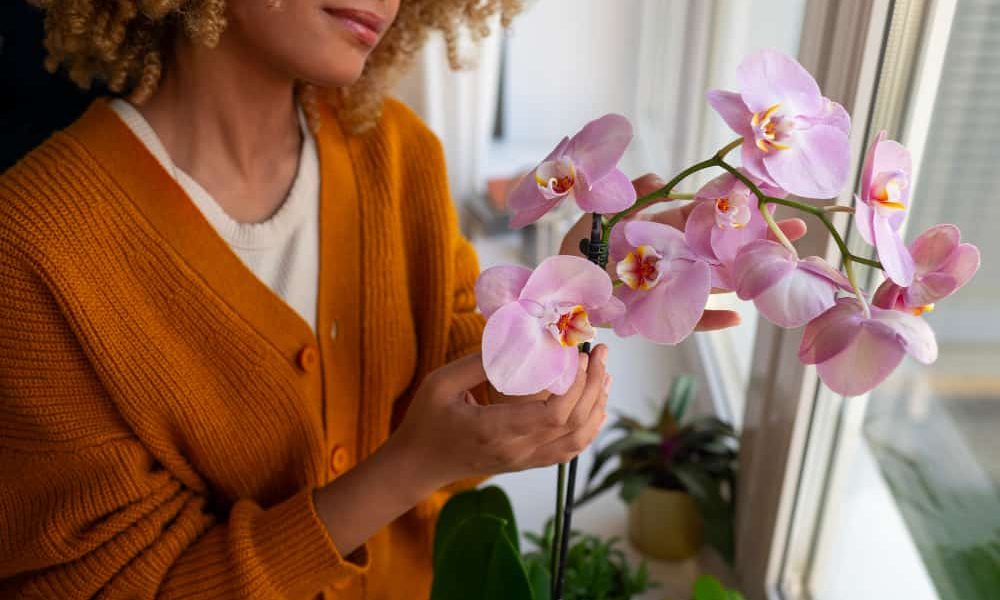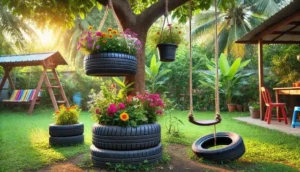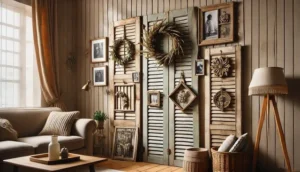Recycling fabric is more than just an eco-friendly trend; it’s a creative, sustainable approach to making something beautiful from items that might otherwise end up in a landfill. Old clothes, worn-out linens, and fabric scraps left from past projects are often overlooked, yet they offer limitless potential for DIY enthusiasts. Among the most popular recycled fabric projects are rugs and wall hangings, which not only upcycle materials but also add a personal, handcrafted touch to home décor.
In this article, we’ll dive into the world of DIY recycled fabric projects, focusing specifically on how to make recycled fabric rugs and wall hangings. Whether you’re a seasoned crafter or a beginner looking to embark on your first project, these simple, affordable ideas will inspire you to turn forgotten fabric into something functional and stylish.
1. Introduction to Recycled Fabric DIY Projects
When you think of recycling, images of plastic bottles or paper might come to mind, but recycling goes beyond those materials. Fabric is one of the most commonly discarded items, often ending up in landfills where it takes years to break down. By reusing old fabrics, you can reduce waste, save money, and create something truly unique. DIY fabric projects give you the chance to breathe new life into materials that might otherwise go unused.
Why Recycled Fabric is Perfect for DIY Projects
First and foremost, fabric is versatile. Whether it’s an old t-shirt, a bed sheet, or fabric remnants from sewing projects, there are countless ways to upcycle these textiles. Moreover, the wide variety of fabrics you can find — cotton, denim, silk, and polyester — allows you to experiment with different textures, colors, and styles.
The Benefits of Recycling Fabric for DIY Projects
Recycling fabric offers several benefits, both personal and environmental. By choosing to recycle, you contribute to reducing the environmental footprint caused by the fashion industry, which is responsible for a significant amount of global waste. Additionally, working with recycled fabric is budget-friendly, making it accessible to just about anyone.
On a personal level, creating DIY fabric projects is an incredibly satisfying and rewarding experience. There’s something special about turning a simple piece of fabric into a functional or decorative item. It allows for endless creativity, whether you’re working with colorful t-shirts, old towels, or well-worn jeans.
2. How to Make a DIY Recycled Fabric Rug
Recycled fabric rugs are one of the most popular and practical upcycling projects. They not only make use of excess or unwanted materials but also add a cozy, handmade feel to any space. You can use fabric from old clothes, bedsheets, or any leftover scraps to create a rug that’s both functional and stylish.
What You Need to Make a Recycled Fabric Rug
Before diving into the actual process, it’s important to gather the right materials. Here’s a basic list of what you’ll need:
- Old fabric: This can be anything from old t-shirts to fabric scraps left over from other projects.
- Scissors: You’ll need sharp fabric scissors to cut the material into strips.
- Needle and thread (optional): If you’re sewing the rug together, having strong thread that matches your fabric will be useful.
- Non-slip rug pad (optional): To ensure your rug stays in place, a non-slip pad underneath is helpful, especially for high-traffic areas.
Step-by-Step Guide to Making a Braided Rug from Recycled Fabric
One of the easiest ways to create a recycled fabric rug is by braiding fabric strips together and then sewing or knotting them into a circular or oval shape. Here’s a simple step-by-step guide to get you started:
- Prepare the Fabric: Start by gathering your old fabrics and cutting them into long strips. The width of the strips will depend on how thick you want the rug to be. Typically, strips that are 1–2 inches wide work well for most projects.
- Braid the Fabric: Once you have your strips, you’ll need to braid them together. To do this, tie three strips together at one end and begin braiding as you would with hair. As you run out of fabric, simply attach new strips by sewing or tying them on.
- Form the Rug: Once you have a long braided strip, it’s time to start forming the rug. Begin coiling the braid in a spiral, securing it with thread or fabric glue as you go. Continue this process until you reach your desired rug size.
- Finish the Rug: After you’ve coiled the braid to the size you want, stitch or glue the ends to ensure everything stays in place. If you’re using a non-slip rug pad, cut it to the size of your rug and attach it underneath.
Creative Designs for Recycled Fabric Rugs
One of the great things about DIY fabric rugs is that there are no hard-and-fast rules when it comes to design. You can experiment with different patterns, colors, and textures to create a rug that complements your personal style.
- Color Schemes: If you have a lot of old t-shirts or fabric scraps in a range of colors, consider grouping similar shades to create a gradient effect. For example, using dark colors in the center and gradually transitioning to lighter colors toward the edges can add a stunning visual effect to your rug.
- Mixed Fabrics for Texture: Don’t be afraid to mix different types of fabrics to add texture and depth to your rug. For instance, pairing soft cotton with sturdier materials like denim or corduroy can create a unique tactile experience that adds character to any room.
By recycling fabric to create a DIY rug, you’re not only crafting something beautiful but also contributing to a more sustainable lifestyle. The process is simple, and the result is a cozy, personalized piece that can brighten up any room in your home. So grab those old clothes and fabric scraps, and start crafting!
3. DIY Wall Hanging Using Recycled Fabric
Wall hangings are an excellent way to add personality and charm to any room, and when crafted from recycled fabric, they offer a sustainable and budget-friendly alternative to store-bought décor. Whether you’re aiming for a minimalist, boho, or modern aesthetic, creating your own wall hanging allows you to customize the design to suit your style and space. Plus, they’re relatively simple to make, even if you’re new to crafting.
What You Need to Create a Recycled Fabric Wall Hanging
Before you get started, gather the following materials:
- Fabric scraps: These can come from old clothes, linens, or other leftover fabrics.
- A dowel or wooden stick: This will serve as the base to hang the fabric strips.
- Twine or string: Used to hang the dowel on the wall.
- Scissors: For cutting the fabric into strips.
- Hot glue or sewing materials (optional): To secure fabric pieces if necessary.
Step-by-Step Guide to Making a No-Sew Wall Hanging
A no-sew wall hanging is a perfect project for beginners or those who want a quick, fuss-free crafting experience. Here’s how to make one using only fabric strips and a dowel:
- Prepare the Fabric: Begin by cutting your fabric into long strips. The width and length of the strips depend on how big you want your wall hanging to be. Thinner strips will give a delicate, intricate look, while thicker strips create a bolder statement piece.
- Arrange the Strips: Once you’ve cut enough fabric strips, start arranging them in the order you’d like them to appear on your dowel. You can experiment with different patterns or keep it simple with a monochromatic look.
- Tie the Strips to the Dowel: To attach the fabric strips to the dowel, fold each strip in half and loop it around the dowel, pulling the loose ends through the loop. Repeat this step with each strip until the dowel is full.
- Add Decorative Elements: If you want to elevate the design, consider adding embellishments like beads, feathers, or even tassels made from leftover fabric. You can tie these elements directly onto the fabric strips or the dowel.
- Hang It Up: Attach a piece of twine or string to either end of the dowel, and your wall hanging is ready to display!
Ideas for Decorating with Fabric Wall Hangings
The beauty of DIY fabric wall hangings lies in their flexibility. You can adapt the size, shape, and color scheme to fit any room, whether it’s a living space, bedroom, or nursery.
- Boho Style: Use a mix of neutral, earthy tones like beige, brown, and cream for a boho-chic wall hanging. Add natural materials like wooden beads or feathers to enhance the rustic feel.
- Minimalist Look: Opt for monochrome fabrics such as white, gray, or black to create a clean, minimalist wall hanging. Keep the design simple with uniform strips and avoid additional decorations.
- Bold & Bright: If you love color, don’t hesitate to mix vibrant fabrics in contrasting hues. This works especially well in children’s rooms or creative spaces where a pop of color is welcome.
4. Eco-Friendly Crafts: How to Make Fabric Scrap Rugs
One of the most fulfilling aspects of crafting with recycled fabric is knowing you’re helping the environment by reducing waste. Fabric scrap rugs are an excellent way to use up even the smallest bits of fabric, turning them into a functional and beautiful piece for your home.
Why Use Fabric Scraps for Rugs?
Many people throw away small fabric scraps after completing sewing or crafting projects, believing they’re too small to be useful. However, those scraps can be transformed into unique rugs that add warmth and texture to any room. Beyond aesthetics, upcycling fabric scraps contributes to a more sustainable lifestyle, reducing the demand for new materials and helping to minimize landfill waste.
Easy Methods for Making Fabric Scrap Rugs
There are several different methods you can use to create a fabric scrap rug, depending on the tools and materials you have available. Here are two popular techniques:
- Latch Hooking: This technique involves using a latch hook tool to knot small pieces of fabric through a mesh canvas. It’s a bit time-consuming but results in a plush, shaggy rug that feels great underfoot. To begin, cut fabric scraps into small, uniform pieces and pull each strip through the mesh canvas with a latch hook, securing it in place. Continue this process until the canvas is fully covered with fabric.
- Sewing Method: If you have basic sewing skills, you can create a fabric scrap rug by sewing pieces together in a patchwork style. Cut the fabric into squares or strips and sew them together, either by hand or using a sewing machine. The result is a quilt-like rug that’s both cozy and durable.
Best Fabric Types for Scrap Rugs
While you can use just about any type of fabric for scrap rugs, some materials work better than others. Here are a few recommendations:
- Cotton: Soft and easy to work with, cotton is an excellent choice for fabric scrap rugs. Old t-shirts, sheets, and pillowcases are ideal sources.
- Denim: Denim from old jeans is sturdy and durable, making it perfect for high-traffic areas like entryways or kitchens.
- Fleece: Fleece is another great option, especially for creating plush, soft rugs. Its thickness adds warmth, making it ideal for living rooms or bedrooms.
5. Repurposing Old Clothes into Functional Home Decor
Old clothes piling up in your closet? Don’t throw them away! With a little creativity, those worn-out garments can be transformed into functional and stylish home décor, like rugs. In particular, t-shirts and jeans are fantastic materials for DIY rug projects due to their softness and durability.
How to Turn Old T-Shirts into a T-Shirt Yarn Rug
Old t-shirts may not seem like much, but when cut into strips and turned into yarn, they can be woven or crocheted into a beautiful rug. Here’s how you can do it:
- Create T-Shirt Yarn: Lay a t-shirt flat and cut it into strips, about 1–2 inches wide. Once you have your strips, stretch them out to create yarn. The edges will naturally curl inwards, giving the yarn a neat, finished look.
- Crocheting the Rug: If you know how to crochet, use a large crochet hook to start creating your rug. Begin with a chain and work your way around, gradually increasing the size as you go. If you’re not familiar with crochet, no worries! There are plenty of simple tutorials online to get you started.
Using Old Jeans to Create Durable Rugs
Denim is another excellent material for rugs because of its durability. To create a denim rug, cut your old jeans into squares or strips. You can sew these pieces together, either in a simple pattern or in a more intricate patchwork design. Denim’s tough fabric makes it ideal for areas of the home that see a lot of foot traffic, like hallways or kitchens.
By upcycling old clothes and fabric scraps, you’re not only creating unique, custom pieces for your home but also contributing to a more sustainable future. These DIY fabric projects are easy, budget-friendly, and incredibly satisfying. Whether you’re making a t-shirt yarn rug or a denim patchwork piece, these crafts will give new life to old materials and provide your home with a personal, eco-conscious touch.
6. Customizing Your DIY Fabric Projects for Unique Home Style
One of the best parts of DIY fabric projects is the ability to customize each piece to perfectly match your home’s style and décor. Whether you’re working on a recycled fabric rug or a wall hanging, personalizing the design adds a layer of creativity and uniqueness that simply can’t be found in store-bought items.
Personalizing Recycled Fabric Rugs
If you want to take your DIY fabric rug to the next level, consider adding custom details that reflect your style and preferences. Here are a few ways to personalize your rug:
- Add Fringe or Tassels: Adding fringe or tassels to the edges of your rug can enhance its overall look and make it stand out as a focal point in any room. You can make the tassels using leftover fabric strips or yarn and attach them by tying or stitching them to the rug’s edges.
- Embroidery: For a more intricate and artistic touch, embroidery is a great way to add patterns, shapes, or even words to your recycled fabric rug. You can use embroidery floss or yarn to stitch designs directly onto the rug’s surface.
- Fabric Paint: If you want to add a pop of color or a bold design to a plain rug, fabric paint can help you achieve this. Paint geometric shapes, abstract patterns, or even freehand designs directly onto the fabric. This works particularly well on lighter-colored fabrics.
Dyeing Fabric for Custom Colors
If the fabric you’re using isn’t quite the right color for your space, consider dyeing it before starting your project. Natural dyes made from ingredients like avocado pits, onion skins, or turmeric are an eco-friendly option that adds rich, earthy tones to fabric. You can also use commercial fabric dyes for a wider range of colors.
Here’s a simple method for dyeing fabric with natural ingredients:
- Prepare the Fabric: Wash and dry the fabric to remove any dirt or residue. This helps the dye absorb evenly.
- Make the Dye: Boil your chosen dye material (like avocado pits or onion skins) in water for about an hour, then strain out the solids.
- Dye the Fabric: Soak the fabric in the dye for several hours, depending on the depth of color you want to achieve. Stir occasionally to ensure even coverage.
- Set the Color: After dyeing, rinse the fabric in cold water and let it dry completely.
Designing Unique Fabric Wall Hangings for Any Room
Creating a custom wall hanging can instantly elevate a room’s décor. To design a wall hanging that suits your style, think about the room’s overall theme and color scheme. Here are a few tips to get started:
- Match Colors to Your Décor: If your room features neutral tones, consider using soft, natural-colored fabrics like beige, gray, or cream. For a more vibrant look, choose fabrics in bold, contrasting colors that make a statement.
- Add Embellishments: Embellishments like beads, feathers, or even small mirrors can add an extra layer of detail to your wall hanging. For a more boho feel, try weaving in beads or wooden elements. For a modern touch, consider geometric embellishments or metallic accents.
- Play with Size and Shape: Don’t be afraid to experiment with different shapes and sizes. A long, vertical wall hanging can create the illusion of height in a room, while a wide, horizontal piece can make a space feel more expansive.
7. Tips for Finding the Best Recycled Fabrics
Sourcing the right fabric is essential for creating DIY projects that are both beautiful and durable. Luckily, there are many places to find high-quality, recycled fabrics without breaking the bank. Here are some tips for sourcing the best materials:
Where to Source Recycled Fabrics
- Thrift Stores: Thrift shops are treasure troves for old clothes, linens, and even curtains that can be repurposed into your DIY fabric projects. Keep an eye out for garments made from natural fibers like cotton or wool, as these are generally easier to work with and more durable.
- Garage Sales: Garage and yard sales often feature clothing, bed sheets, and other textiles at low prices. You can find hidden gems that may be perfect for your next craft project.
- Your Own Closet: Sometimes, the best source of fabric is right in your own home. Old t-shirts, jeans, and bed linens are ideal materials for DIY projects. Take a second look at those items you were about to throw away — they may have a new life as a rug or wall hanging.
How to Choose the Right Fabrics for Your Projects
Not all fabrics are created equal, so it’s important to select the right type for your specific project. Here are some factors to consider:
- Durability: If you’re making a rug, choose fabrics that are strong and durable, like denim or canvas. These materials can withstand regular use and won’t wear out easily.
- Softness: For wall hangings or other decorative items, you may want to opt for softer fabrics like cotton or linen. These materials drape nicely and give a more relaxed look.
- Color and Pattern: Think about how the fabric’s color and pattern will fit into your overall design. Neutral-colored fabrics can be dyed or embellished, while brightly colored or patterned fabrics can stand out as statement pieces on their own.
Preparing Fabrics for Crafting
Once you’ve sourced your recycled fabrics, it’s important to prepare them before starting your project. Follow these steps to ensure the best results:
- Clean the Fabric: Wash and dry the fabric to remove any stains, dirt, or odors. This is especially important for thrifted or secondhand materials.
- Cut the Fabric: Depending on the project, you may need to cut the fabric into strips, squares, or other shapes. Be sure to use sharp scissors or a rotary cutter to ensure clean, even edges.
- Organize by Size and Color: If you’re working with a variety of fabrics, organize them by size and color before starting your project. This will make it easier to find the right pieces as you work.
Conclusion: The Value of Recycled Fabric DIY Projects
Recycled fabric DIY projects offer an incredible opportunity to combine creativity with sustainability. Whether you’re crafting a cozy rug from old t-shirts or designing a one-of-a-kind wall hanging, upcycling materials can breathe new life into your home décor. Not only do these projects help reduce waste, but they also allow you to create something truly unique and meaningful.
As you explore the world of recycled fabric crafts, remember that each project is a reflection of your personal style and a step toward a more sustainable lifestyle. By repurposing materials that might otherwise go to waste, you’re making a positive impact on the environment — and adding a special, handmade touch to your home. So, gather those old clothes and fabric scraps, and get ready to create something beautiful!







